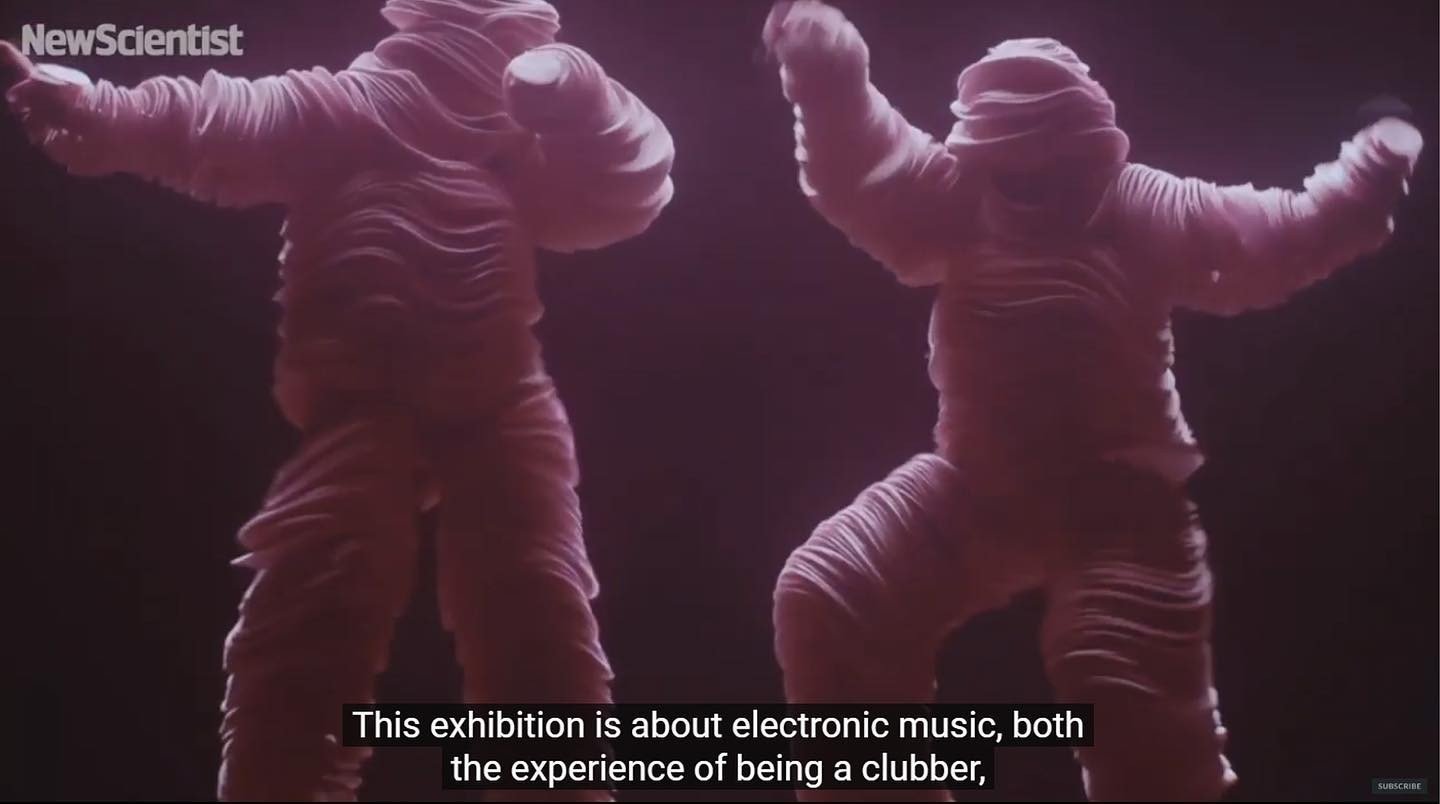‘More than Music’ Part 2 | Electronic Sound and Vision
Technology has been at the forefront of electronic music since its conception, with the genre’s expansion over the past fifty years fundamentally linked to the growing sophistication of digital instruments and the means of communicating its sound. But electronic is about more than just audio quality – it rather describes a holistic approach to music as a sensory experience. That is why electronic artists often complement their sound with visual effects, combining to form a transportive force that simultaneously overwhelms and exhilarates – an intimate relationship between human and machine that both the exhibition at London’s Design Museum and Node celebrate.
Indeed, electronic music has always emphasised total immersion - the accelerated rhythms made possible with drum machines, which create a pulsating atmosphere, and the sparse use of lyrics make electronic almost ritualistic. Studies have supported this by suggesting a common ancestor between electronic festivals and the tropes of shamanism, including the effects of dance as a system for sociality, exploration of consciousness and emotion as well as feelings of identity and personal catharsis. Such is why electronic festivals and cultural events have been a particularly liberating force for minority communities.
This assimilation of the individual within the framework of mass spectatorship is also explored thoroughly by electronic musicians. From the early light shows of pioneering psychedelic bands to the illegal raves of the ‘80s and ‘90s and present-day EDM festivals, spectacle and bombast have been used to invite extrospection – to lose oneself quite literally in the music.
This has only increased with the commercialisation of the genre over the past thirty years, with DJ sets and their laser light shows, holographic images, fog machines and other such audio-visual effects more like a neon opera than a music gig.
The exhibition at London’s Design Museum centred on this, with the residen
Long-time collaborators with the pair of musicians, Smith and Lyall’s background in the creation of labels and posters for the raves of the early ‘90s exemplifies another equally important pillar of the electronic community. Not just as publicity but in these events’ overall harmony between sound and vision. The Design Museum explored this too with a carefully curated selection of over 400 objects, including posters, masks, and costumes, from the electronic scene’s fifty-year history.t artists pairing their work with sophisticated light shows and other non-audio mediums. For example, the graphic design duo, Smith and Lyall, created a 3D experience using visual and lights for the Chemical Brothers’ exhibition set.
Indeed, this harmony is the reason why HYLIXA was chosen to help exhibit this genre. With its own dramatic visual approach to acoustic design, which is at the same time emotive and technologically captivating, Node’s loudspeaker is uniquely capable of solving the harmonic complexities of electronic music.
Departing from the box-like design of traditional speakers, Node took inspiration from the shape of the human head to create a monocoque structure that dramatically reduces sound wave diffraction whilst maintaining a clean aesthetic. Coupled with the world’s first helical bass within this structure, and a talented balance mode radiator driver which accounts for most of the bandwidth, HYLIXA delivers a soundstage worthy of the dense layering (responsible for dynamics, 3D stereo imaging, timbre, etc.) that makes up a great electronic mix.
As HYLIXA’s co-designer, Ashley May, has said, ‘electronic is more than music…the innovation, culture, graphics and design of the movement is inseparable from the movement itself.’ This idea, of sensory fusion between emotion and technology, will continue to produce inspiring electronic music.





